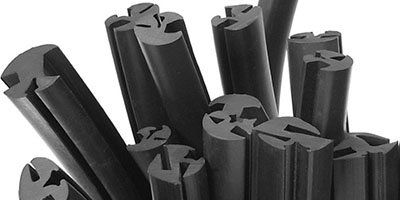Everything you need to know about Extrusions
Everything you need to know about Extrusions
Everything you need to know about Extrusions
16 Sep 2020

Extrusion Applications
Extrusions have a wide range of applications. The flexible self grip extrusions are used in sealing tractor and machinery windows, doors and glazing. These sealing profiles are made from a combination of PVC edge protectors with bonded sponge rubber profiles or a co-extrusion of solid and sponge rubber. These profiles serve as a dual-function in that they cover sharp or unfinished edges as well as offering a sealing function.
Sponge rubber tubes are extremely flexible and are used to seal doors and hatches, amongst other things. They are assembled in a similar way to edge protectors.
Edge protection profiles eliminate the preparatory and follow-up work when finishing edges. They also provide a decorative effect. Edge protectors consist of a U-shaped metal base, a steel strip or wire carrier and are then covered with PVC or rubber. These ensure a tight grip on the edge, even if radil or bends must be converted.
In some profiles, the clamping effect is strengthened by PVC lips incorporated into the PVC jackets. The edge protectors are pressed onto the edge by hand, or with a rubber or thermoplastic hammer for quick installation.
The sealing edge protection profile is typically compressed at about 30-40% to ensure compactness and restoring force. Compression should occur at a maximum of 50%.
Different industries
The extrusion profiles are used in a wide range of industries including agriculture, automotive, glass and glazing, windscreen replacement, construction, medicine, engineering, transportation and food industries.
Rubber Materials
Extrusions are made from natural rubber and synthetic polymers; EPDM (ethylene propylene diene monomer rubber), silicone, PVC, and Polyurethane amongst others. Sealing profiles are a combination of PVC edge protectors with bonded sponge rubber profiles or a co-extrusion of solid and sponge rubber. These profiles have a dual function; they cover sharp or unfinished edges and also offer a sealing function.
Some of the rubbers in the extrusions we stock here at Abbey Seals are natural rubber; a rubber that has good abrasion and low temperature resistance, however it is not resistant to oils, fuels or UV exposure. Temperature range: -60°C to +75°C Hardness Shore A: 50° to 80°.
And EPDM ethylene propylene diene monomer rubber. This material has good physical properties that include excellent resistance to UV, multiple chemicals, steam and ageing. It is not compatible with oils or fuels. Temperature range: -50°C to + 130°C Hardness Shore A: 50° to 80°.
Choosing the correct extrusion rubber depends on the application. At Abbey Seals, we only stock the best quality extrusions from reputable manufacturers to ensure we are providing you with safe and appropriate extrusions for your business needs. Contact our experts today, and we will be happy to answer any questions you might have about extrusions and any other applications.
-
Post tags
-
Extrusions
-
Extrusion Applications
